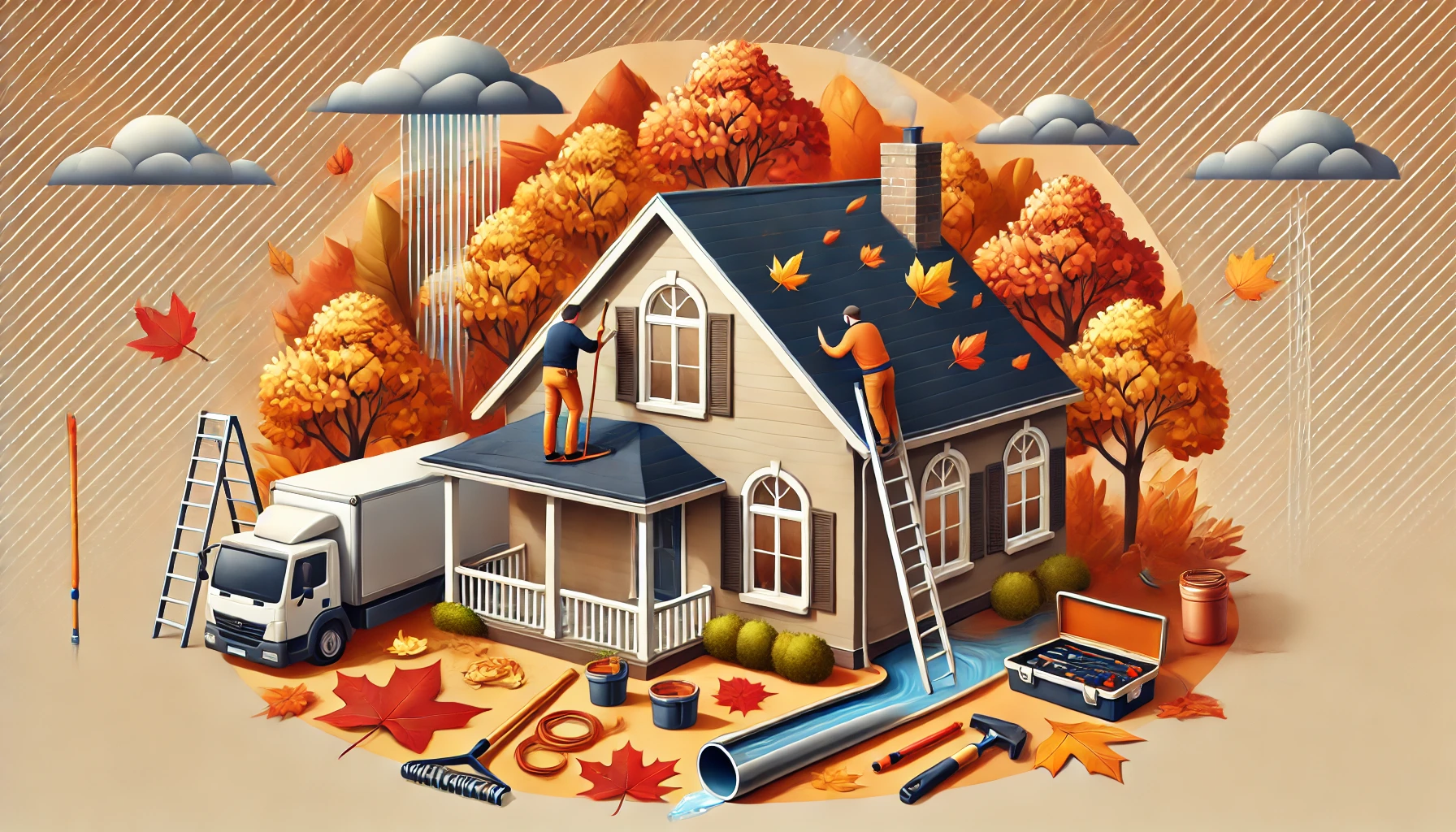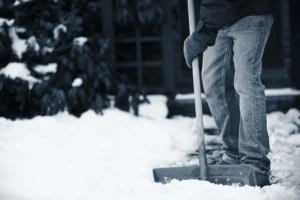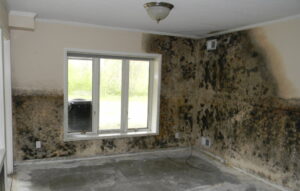As the crisp air of fall rolls in, so do a variety of weather changes that can impact your home’s exterior. From heavy rain and winds to dropping temperatures, the fall season can cause damage if your home isn’t prepared. Taking proactive steps now to protect your home’s exterior can save you from costly repairs later and help keep your property looking great throughout the season. Here’s how to protect your home’s exterior from fall weather damage.
1. Inspect and Clean Gutters and Downspouts
Fall means falling leaves, and those leaves can quickly clog up your gutters and downspouts. Blocked gutters prevent proper water drainage, which can lead to water pooling on your roof, leaking into your home, or causing foundation damage.
- How to do it:
- Clear debris regularly: Clean out leaves, twigs, and other debris from your gutters and downspouts at the start of fall and regularly throughout the season.
- Install gutter guards: Consider installing gutter guards to prevent leaves from accumulating in your gutters, reducing the need for frequent cleanings.
- Check for proper drainage: Make sure your downspouts are directing water away from your home’s foundation. Add extensions to your downspouts if needed to keep water from pooling near the base of your home.
- Why it’s important: Clean and functional gutters ensure that rainwater flows away from your roof and foundation, preventing water damage, leaks, and foundation issues. This simple maintenance task can save you from costly repairs in the long run.
2. Seal Gaps Around Windows and Doors
Cold air drafts and water leaks can enter your home through gaps around windows and doors, leading to higher heating bills and potential water damage.
- How to do it:
- Inspect for gaps and cracks: Check the exterior of your home for any gaps or cracks around windows, doors, and siding. Pay close attention to areas where different materials meet, like brick and wood.
- Apply caulking: Use exterior-grade caulk to seal any gaps around windows and doors. This will keep cold air out and prevent water from seeping into your home.
- Install weatherstripping: For larger gaps around doors, install weatherstripping to create a tight seal and block drafts.
- Why it’s important: Sealing gaps around windows and doors improves your home’s energy efficiency, keeping it warm and dry throughout the fall season. It also prevents moisture from getting inside, reducing the risk of wood rot and mold growth.
3. Inspect and Repair Your Roof
Your roof is your home’s first line of defense against fall weather, especially rain and wind. Ensuring your roof is in good condition will prevent leaks and water damage during the season’s storms.
- How to do it:
- Check for missing or damaged shingles: Inspect your roof for any missing, cracked, or curling shingles that could allow water to enter your home. Replace any damaged shingles before fall storms hit.
- Look for signs of wear and tear: Check the flashing around chimneys, vents, and skylights for any cracks or gaps. Flashing helps prevent water from seeping into your home, so it’s important to repair any damage you find.
- Clear debris from the roof: Remove any leaves, branches, or debris from your roof. Debris can trap moisture and cause mold or mildew growth, as well as clog gutters.
- Why it’s important: A well-maintained roof prevents leaks and protects your home from water damage. Addressing roof issues before fall weather hits will help you avoid costly repairs down the line.
4. Protect Outdoor Furniture and Decks
Fall weather can be tough on your outdoor spaces, from heavy rain to dropping temperatures. Protecting your outdoor furniture, decks, and other features will help keep them in good condition throughout the season.
- How to do it:
- Store or cover outdoor furniture: If possible, store outdoor furniture in a garage, shed, or covered area. If storage isn’t an option, use weatherproof covers to protect your furniture from rain and cold temperatures.
- Clean and seal your deck: Sweep off leaves and debris from your deck to prevent moisture buildup. If you have a wooden deck, consider applying a weatherproof sealant to protect it from rain and snow.
- Trim overhanging branches: Heavy rain and winds can cause tree branches to fall, potentially damaging your outdoor spaces. Trim back any overhanging branches to reduce the risk of damage.
- Why it’s important: Properly maintaining and protecting your outdoor spaces will help them withstand fall weather, preventing damage from moisture, mold, and debris. You’ll also extend the life of your outdoor furniture and deck.
5. Check and Maintain Your Home’s Siding
Your home’s siding plays a major role in protecting it from the elements. Damaged or loose siding can allow moisture to seep in, leading to rot, mold, and insulation problems.
- How to do it:
- Inspect for damage: Walk around your home and look for any signs of cracked, warped, or loose siding. Pay attention to areas near windows, doors, and the foundation, as these are common spots for damage.
- Repair or replace damaged sections: If you find any damaged or loose siding, repair or replace it promptly. Even small cracks can allow water to seep behind the siding, causing long-term damage.
- Clean the siding: Dirt, mold, and mildew can accumulate on your siding, especially during the fall. Use a pressure washer or a scrub brush with soapy water to clean your siding and remove any buildup.
- Why it’s important: Well-maintained siding protects your home from water damage and helps keep it properly insulated. Taking care of your siding now can prevent costly repairs and keep your home looking great through the fall and beyond.
6. Prepare Your Foundation and Landscaping
The transition to fall can cause shifts in your landscaping and affect your home’s foundation if not properly maintained. Protecting both areas will help prevent structural damage and keep water away from your home.
- How to do it:
- Inspect the foundation: Look for any cracks or gaps in your home’s foundation that could allow water to seep in. Seal any cracks with concrete patching compound to prevent water damage.
- Ensure proper drainage: Make sure your landscaping slopes away from your home’s foundation to prevent water from pooling around the base. Add soil or mulch as needed to improve drainage.
- Clear fallen leaves and debris: Rake up fallen leaves and debris from your yard, walkways, and gutters to prevent clogs and moisture buildup. Leaves left to decompose can also attract pests like rodents or insects.
- Why it’s important: Proper drainage and foundation maintenance prevent water damage and erosion, protecting your home from serious structural issues. Regularly clearing leaves and debris keeps your yard healthy and your home safe from pests.
7. Test Outdoor Lighting and Electrical Outlets
As fall brings shorter days, you’ll rely more on outdoor lighting for safety and convenience. Ensuring your lights and outdoor electrical outlets are in good working condition is essential.
- How to do it:
- Check outdoor lights: Test your porch, driveway, and pathway lights to ensure they’re working properly. Replace any burnt-out bulbs or damaged fixtures.
- Consider upgrading to LED bulbs: LED bulbs use less energy and last longer than traditional bulbs, making them a cost-effective and eco-friendly option for outdoor lighting.
- Test outdoor outlets: Ensure that all outdoor electrical outlets are functioning correctly and protected from moisture. Consider installing outlet covers to protect them from rain and snow.
- Why it’s important: Well-lit outdoor spaces improve safety and curb appeal as the days grow shorter. Properly functioning electrical outlets will allow you to safely use outdoor tools and decorations during the fall.
Final Thoughts: Be Proactive This Fall
Fall weather can be unpredictable, but by taking proactive steps to protect your home’s exterior, you can prevent damage and ensure your home is ready for the cooler months ahead. From cleaning gutters and sealing gaps to protecting your roof and outdoor spaces, these maintenance tasks will help keep your home safe, energy-efficient, and looking its best throughout the fall season.









